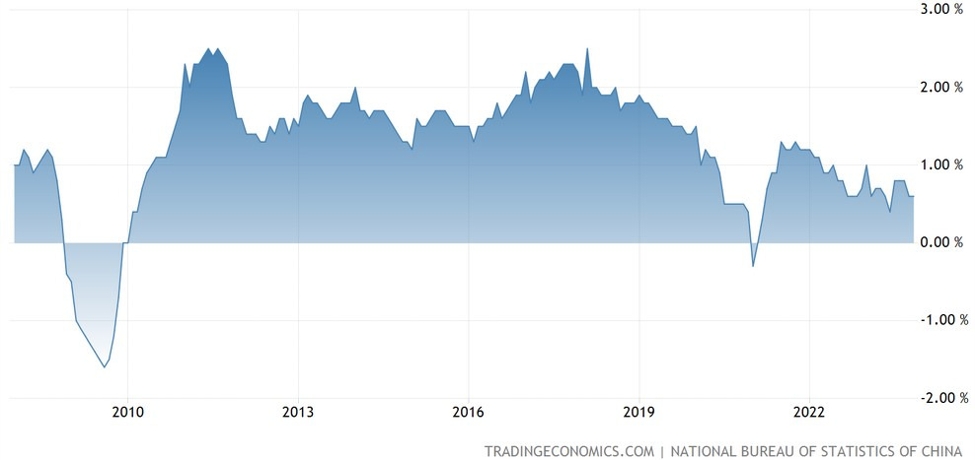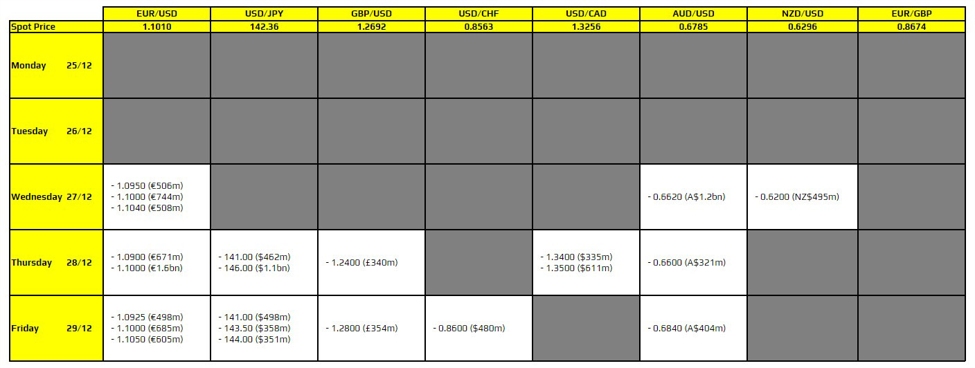I am Itai Levitan. For years at ForexLive – now InvestingLive.com – I have helped investors and traders with various opinions around earnings and today I was thinking about the upcoming Nvidia earnings. This article is not a forecast on what may happen on Wed night and the Thursday right after the earnings, but it is about if and how an NVDA stock holder may want to consider risk mitigation before going into the earnings, as it is, by definition, a risky event, regardless of what you think of AI, AI revolutions and about what may be the best company in the world today.
A company can kick ass and still come to bite your ‘buy and hold’ position, at its earnings. Experienced investors know exactly what I mean.
As a more blunt perspective, one could argue that Nvidia has to almost impress God itself on the upcoming earnings in order to stage a meaningful upside guidance surprise that would merit many sharks buying even more stock at these elevated prices.
But I am not going into what will happen. I am here to talk about risk management.
If you believe in a company for the long run but you do not want a single report to punch a hole in your portfolio, this guide is for you.
The goal is simple: stay invested, control downside, and let the upside take care of itself when the thesis is right.
My Philosophy For NVDA Earnings Weeks – Options to Consider
-
I separate my investment from my event risk. I can believe in the company and still buy insurance for a week.
-
I choose finite risk, preplanned exits, and I write them down before I enter.
-
I prefer simple structures I can manage during a fast market.
-
I size small enough that an overnight gap does not force me to react emotionally.
Options – the 5 minute primer
-
Call – the right to buy shares at a set price by a set date.
-
Put – the right to sell shares at a set price by a set date.
-
Theta – time decay. Option buyers pay it, sellers collect it.
-
Vega – sensitivity to implied volatility. Before earnings, IV tends to rise. After the release, IV often drops sharply. That drop is the IV crush.
-
Assignment – short options can lead to getting shares called away or put to you. Always know your obligations and plan how you will respond.
Two practical truths:
-
Buying options into earnings is expensive, but it can be worth it for defined protection.
-
Selling options into earnings benefits from IV crush, but can be dangerous if the move beats what the market priced in.
Decision Map For A Long Term Holder of NVDA Stock
Ask three questions.
-
Do I want a floor under my stock for the event window
-
Yes – use a protective put, a put spread, or a collar.
-
No – consider income only with a covered call or simply do nothing.
-
Am I comfortable capping upside for a short window
-
Do I want a tactical overlay that can profit from a pre or post report dip
-
Yes – use a scaled short stock hedge with strict risk controls, or buy a short dated put.
-
No – stick to insurance or income.
My Core Playbook – from simple to more sophisticated
1) Protective Put – the simplest insurance
What it is
Why I use it
Trade offs
How I choose it
Best for
2) Put Spread – budget friendly insurance
What it is
Why I use it
Trade offs
Best for
3) Covered Call – income to cushion a decline
What it is
Why I use it
Trade offs
Best for
4) Collar – a floor plus income, often near zero cost
What it is
Why I use it
Trade offs
Best for
One example you can study on MarketChameleon
MarketChameleon’s strategy screener often displays collars around earnings with payoff diagrams and probability ranges. It shows how the short call premium can offset the protective put cost and how your P&L behaves across end prices. If you want to explore live data and compare variations side by side, visit MarketChameleon.com. They advertise a 7 day free trial so you can try the tools and see whether a collar, a put spread, or a pure put best fits your plan. Or just get into the options world and educate yourself about something new. You probably won’t regret it.
5) Calendar or Diagonal Put Hedge – intermediate
What it is
Why I use it
Trade offs
Best for
6) Selling Premium Without Stock – advanced only
What it is
Why I rarely recommend it to first timers
-
Leaders like NVDA sometimes move more than implied. Losses can grow fast.
-
Learn defined risk first, then graduate to premium selling if it matches your temperament.
Tactical Overlay – the 3 to 1 short idea for NVDA (insurance, not speculation) I share
Possible hedge into NVDA earnings, if you’re holding.
Sometimes I add a temporary short overlay to blunt exposure or to seek incremental profit on a pullback. On the 12 hour NVDA chart I shared, the structure is intentionally simple. To clarify: This is a simple short, and does not have anything to do with options. Still, those that play options may be interested in my opinion where NVDA might possible drift down to, in case it is hit on earnings (or meets a sell-off right after a possible last bull trap after an immediate post earnings spike)
How a long term holder can apply it
-
If I own 100 shares and want a 50 percent hedge, I short 50 shares using that bracket.
-
If price rallies to my stop, I close the short and keep my core long.
-
If price trades down into the target zone, I cover the short and reassess whether I want to keep protection for the next leg.
Two safety notes
-
Short stock has theoretically unlimited risk if the stock gaps above the stop. Options can cap that risk. If I want the cap, I buy a cheap out of the money call against the short.
-
Overnight gaps can skip stop orders. I size the hedge so a bad gap is survivable.
How I pick expirations and strikes
-
Cover the event – expiry must span the report and the immediate reaction.
-
Define the floor – protective put or the upper strike of a put spread should sit where a drop would change my risk tolerance.
-
If I sell a call – I choose a level where I would be happy to trim. With a collar, the higher I push the call, the less it pays for the put.
-
Premium budget – I set a quarterly hedging budget. That discipline prevents me from chasing protection emotionally at the worst moment.
Sizing and execution – quick rules
-
First cycle, size small. Learn the workflow.
-
Use limit orders.
-
If I am new, I hedge in round numbers – for example, 1 put per 100 shares owned.
-
For a short overlay, hedge 25 to 50 percent of the position, not 100 percent, unless I am very experienced.
-
Write the exit plan before entry: when to take profits, when to roll, when to cut.
What I do right after the announcement
-
If the stock drops and my put or put spread gained – I harvest some of the gain or roll the hedge lower if I still want coverage. I do not let a large option gain decay back to zero without a reason.
-
If the stock pops and I sold a call or used a collar – if I want to keep the shares, I buy back or roll the call. If I am happy to trim, I let assignment do the selling for me at expiration.
-
If I used the short overlay – I respect my stop. If it worked, I reduce or close the short into the zone and decide whether I want a new hedge for the next phase.
Mistakes I see beginners make
-
Buying puts too far out of the money to make them cheap – they often do not hedge enough.
-
Letting earnings week options linger without a plan – IV crush drains them fast.
-
Selling covered calls too close to the money when the real goal is to hold – choose a strike you can live with.
-
Oversizing the short hedge – gaps happen.
Quick selection guide
-
I want the simplest safety net with no upside cap – Protective put.
-
I want cost controlled insurance – Put spread.
-
I want near zero net cost and accept a cap for one cycle – Collar.
-
I want a tactical play with a strict bracket – Partial short overlay with a protective call if I want defined risk.
The Mini options glossary
- Call – right to buy at a set price.
- Put – right to sell at a set price.
- Theta – time decay.
- Vega – sensitivity to implied volatility.
- IV crush – volatility drop after a known event, like the upcoming Nvidia earnings this Wed, 27 August, AMC (after market close)
- Assignment – delivery of shares when short options finish in the money.
Final word before Nvidia earnings on Wed, and where to continue learning
My approach is about preparation, not prediction. I let my long term thesis work, and am a believer in the medium term (next couple of years) at Nvidia. And think the company is amazing. But I learned from my experience that earnings is a wild card, and I may use options or a small tactical hedge to keep earnings week from dictating my emotions.
If you want to explore live chains, probability cones, and ready made strategy scans, visit MarketChameleon.com. Their awesome platform shows collars, put spreads, and other hedges with clear payoff diagrams, and they advertise a 7 day free trial so you can evaluate whether the tools give you an edge.
Education only – not investment advice. Options involve risk and are not suitable for every investor. Always confirm product details, tax rules, and your personal constraints before trading. Visit investingLive.com for additional views.















